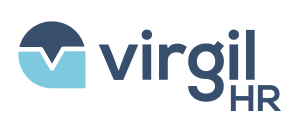Washington has made several changes to the state’s Paid Family and Medical Leave Program (PFML), which provides partial wage replacement benefits to employees on leave for specified family and medical reasons:
- Premium Related Issues: The method by which the Employment Security Department (ESD) calculates the size of an employer for purposes of premium requirements and grant eligibility is modified. On September 30th of each year, ESD must average the number of employees reported by an employer on the last day of each quarter over the last four completed calendar quarters.
- Small Business Grant Assistance: The eligibility criteria and requirements for the current small business grants are modified to apply only to employers with 50 to 150 employees. A grant is established for employers with fewer than 50 employees of $3,000 for the costs of hiring a temporary worker to replace an employee leave for a period of seven days or more or for significant additional wage-related costs due to the employee’s leave, which may be documented through an attestation submitted by the employer.
- Benefits: The minimum claim period to qualify for benefits is reduced to four consecutive hours of leave.
- Employment Protection: The standards for employment protection are modified. Employers are required to provide employment protection to eligible employees while on PFML leave if the employee works for an employer with:
- 25 or more employees from January 1, 2026, to December 31, 2026;
- 15 or more employees from January 1, 2027, to December 31, 2027; and
- 8 or more employees on or after January 1, 2028.
- More Employment Protection Changes:
- The minimum hourly threshold for qualifying for employment protection is removed. Instead, to qualify for protection, an employee must have begun employment with their current employer for at least 180 calendar days before taking leave. This applies both to employers participating in PFML and also to those opting to use approved voluntary plans.
- Employment protection is extended to any period of unpaid leave protected by FMLA where the employee was eligible for PFML benefits but did not apply for and receive those benefits, so long as the employer provides certain written notices to the employee. The written notices must include certain elements identified in the bill, including that the leave is counting against any permitted period of employment protection under PFML and FMLA, and that the use of unpaid leave does not affect the employee’s eligibility for benefits in PFML.
- Maximum periods of employment protection are established. Except by written agreement between the employer and employee or an employee bargaining unit, the employee forfeits the right to employment restoration if the employee does not exercise it upon the earlier of the:
- first scheduled work day following the period of leave; or
- first scheduled work day following a continuous period of, or combined intermittent periods of a total of, 16 typical workweeks of leave taken during a period of 52 consecutive calendar weeks, except this period is extended to 18 typical workweeks of leave during a period of 52 consecutive calendar weeks if any of the leave was taken as a result of a serious health condition with a pregnancy resulting in incapacity.
- For leave extending certain periods, the employer must provide at least five business days advance written notice to the employee, regarding the estimated expiration of employment protection and the date of the employee’s first scheduled work day. The notice must be sent in the language understood by the employee and transmitted by a method reasonably certain to be receive promptly by the employee.
- Health Care Coverage: The requirement for employers to maintain health care coverage is expanded. Employers must maintain an employee’s health care coverage during any period of leave in PFML in which the employee is also entitled to employment protection.
- Notice:
- Whenever an employee of an employer who is qualified for benefits is absent from work to provide family leave, or take medical leave for more than seven consecutive days, the employer must provide the employee with a written statement of the employee’s rights under this title in a form prescribed by the commissioner. The statement must be provided to the employee within five business days after the employee’s seventh consecutive day of absence due to family or medical leave, or within five business days after the employer has received notice that the employee’s absence is due to family or medical leave, whichever is later.
- The commissioner will develop the written statement of employee rights to be distributed by an employer. At a minimum, the statement must explain, in an easy to understand format, eligibility requirements, possible weekly benefits, application processes, employment protection rights, and nondiscrimination rights, and direct the employee to appropriate contacts and portals for more information.
- Each employer must post and keep posted, in conspicuous places on the premises of the employer where notices to employees and applicants for employment are customarily posted, a notice, to be prepared or approved by the commissioner, setting forth excerpts from, or summaries of, the pertinent provisions of PFML, including, but not limited to: Eligibility requirements, possible weekly benefits, application processes, employment protection rights, nondiscrimination rights, and other protections, and information pertaining to the filing of a complaint.
The changes take effect on January 1, 2026.
